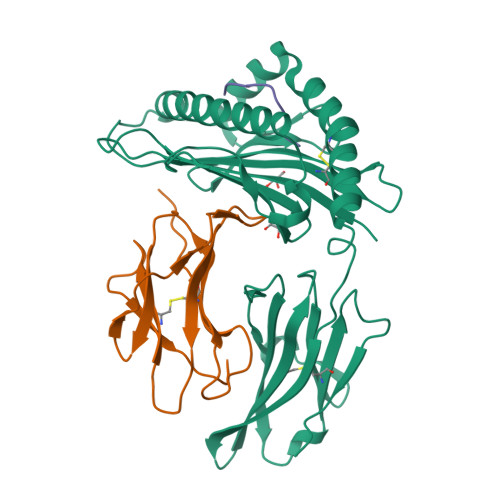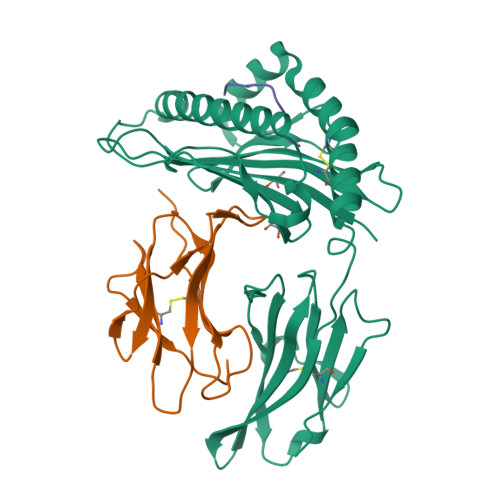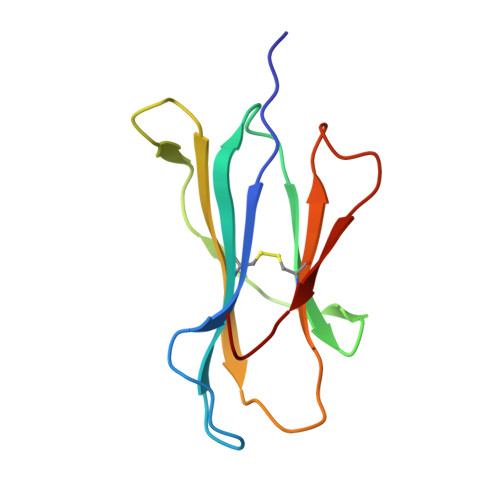HLA-B27 Subtypes Differentially Associated with Disease Exhibit Subtle Structural Alterations
Hulsmeyer, M., Hillig, R.C., Volz, A., Ruhl, M., Schroder, W., Saenger, W., Ziegler, A., Uchanska-Ziegler, B.(2002) J Biological Chem 277: 47844-47853
- PubMed: 12244049
- DOI: https://doi.org/10.1074/jbc.M206392200
- Primary Citation of Related Structures:
1JGE, 1K5N - PubMed Abstract:
The reasons for the association of the human major histocompatibility complex protein HLA-B27 with spondyloarthropathies are unknown. To uncover the underlying molecular causes, we determined the crystal structures of the disease-associated B*2705 and the nonassociated B*2709 subtypes complexed with the same nonapeptide (GRFAAAIAK). Both differ in only one residue (Asp(116) and His(116), respectively) in the F-pocket that accommodates the peptide C terminus. Several different effects of the Asp(116) --> His replacement are observed. The bulkier His(116) induces a movement of peptide C-terminal pLys(9), allowing the formation of a novel salt bridge to Asp(77), whereas the salt bridge between pLys(9) and Asp(116) is converted into a hydrogen bond with His(116). His(116) but not Asp(116) adopts two alternative conformations, one of which leads to breakage of hydrogen bonds. Water molecules near residue 116 differ with regard to number, position, and contacts made. Furthermore, F-pocket atoms exhibit higher B-factors in B*2709 than in B*2705, indicating an increased flexibility of the entire region in the former subtype. These changes induce subtle peptide conformational alterations that may be responsible for the immunobiological differences between these HLA-B27 subtypes.
Organizational Affiliation:
Institut für Immungenetik, Universitätsklinikum Charité, Humboldt-Universität zu Berlin, Spandauer Damm 130, 14050 Berlin, Germany.



















